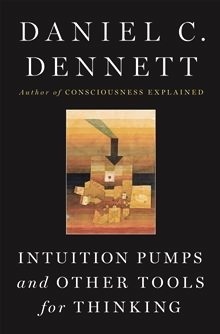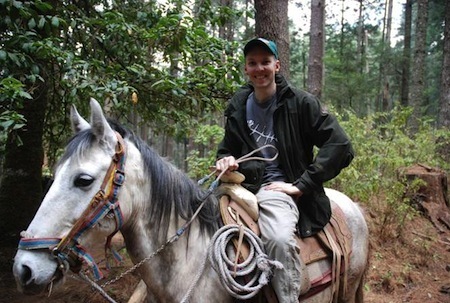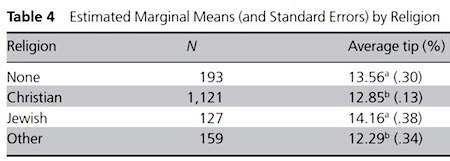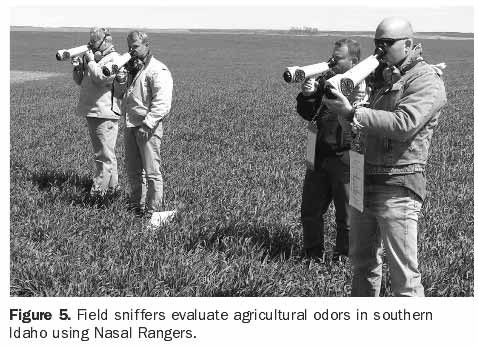Marc Abrahams's Blog, page 490
May 24, 2013
Are Stressed Women More Attractive, or Less?
You may find it stressful to contemplate this study about attractiveness:
“Facial attractiveness is related to women’s cortisol and body fat, but not with immune responsiveness,” Markus J. Rantala [pictured here, below], Vinet Coetzee, Fhionna R. Moore, Ilona Skrinda, Sanita Kecko, Tatjana Krama, Inese Kivleniece and , Biology Letters, epub May 22, 2013. The authors, variously at the University of Turku, Finland, the University of Pretoria, South Africa, the University of Dundee, Scotland, the University of Daugavpils, Latvia, and the University of Tartu, Estonia, explain:
“we photographed young Latvian women, vaccinated them against hepatitis B and measured the amount of specific antibodies produced, cortisol levels and percentage body fat. Latvian men rated the attractiveness of the women’s faces. Interestingly, in women, immune responsiveness (amount of antibodies produced) did not predict facial attractiveness. Instead, plasma cortisol level was negatively associated with attractiveness, indicating that stressed women look less attractive.”
Here is a photograph of lead author Markus Rantala on horseback:
(Thanks to investigator Erwin Kompanje for bringing this to our attention.)


A desk or a bed – which is best for studying? (study)

 As far back as 1968, it seems, “Assertions that studying is best done at a desk rather than on a bed [were] largely untested.” Prompting Robert Gifford (who was then a research assistant at the University of California, but who is now a professor at the Department of Psychology, University of Victoria, Canada) along with Robert Sommer (now Distinguished Professor of Psychology Emeritus at UC Davis) to embark on a project to measure the effectiveness (or otherwise) of studying in bed. They conducted empirical enquiries at three prominent US universities, four state colleges and one junior college. (Students who were found to be studying on the floor, or any place other than a bed or desk were discounted from the dataset). Results were published in their paper : The Desk or the Bed? (Personnel and Guidance Journal, Volume 46, Issue 9, May 1968, Pages: 876–878) The study revealed that – “Almost as many students were found studying on their beds as were found at their desks.” And led to the conclusion that – “There is nothing in these data to support the recommendations for studying in a straight-backed chair at a desk.” The professors had advice for the future too : “The frequent use of beds, couches, and other non-desk study areas has implications for the design and furnishing of study rooms in schools and colleges.”
As far back as 1968, it seems, “Assertions that studying is best done at a desk rather than on a bed [were] largely untested.” Prompting Robert Gifford (who was then a research assistant at the University of California, but who is now a professor at the Department of Psychology, University of Victoria, Canada) along with Robert Sommer (now Distinguished Professor of Psychology Emeritus at UC Davis) to embark on a project to measure the effectiveness (or otherwise) of studying in bed. They conducted empirical enquiries at three prominent US universities, four state colleges and one junior college. (Students who were found to be studying on the floor, or any place other than a bed or desk were discounted from the dataset). Results were published in their paper : The Desk or the Bed? (Personnel and Guidance Journal, Volume 46, Issue 9, May 1968, Pages: 876–878) The study revealed that – “Almost as many students were found studying on their beds as were found at their desks.” And led to the conclusion that – “There is nothing in these data to support the recommendations for studying in a straight-backed chair at a desk.” The professors had advice for the future too : “The frequent use of beds, couches, and other non-desk study areas has implications for the design and furnishing of study rooms in schools and colleges.”
Improbable is unaware of how many academic institutions followed this advice in a practical way. Please let us know, if you know, of any lecture rooms, libraries &etc that were subsequently provided with beds.
The full paper can be read here
BONUS: Over the years, other prominent academics, writers and artists have expounded the virtues of a bed-based intellectual environment. Take for example Dr. Samuel Langhorne Clemens (D. Litt., Oxford). Here he is pictured in his favourite creative mode (photo courtesy New York Public Library)

May 23, 2013
How does one measure the wind speed inside a tornado?
How does one measure the wind speed inside a tornado? Bernie Vonnegut looked back at an early state-of-the-art method, and wrote a report called “Chicken Plucking as Measure of Tornado Wind Speed” [published in "Weatherwise," October 1975, p. 217]. Vonnegut told the world why that early method, which involved a chicken carcass and a cannon, may have been imperfect. For this achievement, Bernie Vonnegut was posthumously awarded the 1997 Ig Nobel Prize for meteorology.
Vonnegut was a scientist — by all accounts a good one. A tribute written the year Bernie Vonnegut died says: “Bernard Vonnegut is best known, however, for his discovery on November 14, 1946 at the General Electric Research Laboratory of the effectiveness of silver iodide as ice-forming nuclei that has been widely used to seed clouds in efforts to augment rainfall.”
This research is thought to have inspired his younger brother Kurt, who wrote many stories involving science (see especially the concept of Ice-nine).
BONUS: Vonnegut also wrote about The Smell of Tornadoes.
BONUS: How do you measure a tornado?

“Making ice-cream more nutritious with meat left-overs”
Today’s Press Release Headline of the Day is:
Making ice-cream more nutritious with meat left-overs
The European Research Media Center supplied the headline, which appears atop a press release full of delicious detail.
At least one newspaper found the press release useful, writing an article about it and including a link back to the press release. (Thanks to investigator Scott Langill for bringing this to our attention.) The Register chose to write its own headline, though:
EU boffins in plan for ‘more nutritious’ horsemeat ice cream — ’Disused’ animal products ideal for sick, elderly
BONUS (unrelated): Gorgonzola ice cream. (HT Mikael Hoffmann)

May 22, 2013
Some say strychnine
Chemistry Blog :
(4aR,5aS,8aR,8a1S,15aS)-4a1,5,5a,7,8,8a1,15,15a-octahydro-2H-4,6-methanoindolo[3,2,1-ij]oxepino[2,3,4-de]pyrrolo[2,3-h]quinolin-14(4aH)-one.
Imagine if Agatha Christie had to write that every time she had to mention the poison used in the murder, or if Hitchcock’s leading man had to vocalise it in the courtroom. Well they’d never get the book or the film down to a manageable size. It’s much easier to say strychnine…



“Are Christian/religious people poor tippers?”
Researchers, many of them, count and measure things. Here is an example:
“Are Christian/religious people poor tippers?” Michael Lynn [pictured here] and Benjamin Katz, Journal of Applied Social Psychology, Volume 43, Issue 5, May 2013, pp. 928–935. (Thanks to investigator Dan Griliopoulos for bringing this to our attention.)
The authors, at Cornell University School of Hotel Administration and at HCD Research, respectively, explain:
“A web-based survey was used to assess the relationships of religious faith and frequency of church attendance with tipping under conditions of good and bad service. Results indicated that Jews and those with no religion tipped more than Christians and members of other religions, but that the vast majority of Christians tipped at or above the normative 15% of bill size. Worship frequency also significantly interacted with service quality such that the tips of those who frequently worship vary with service quality less than the tips of those who worship less frequently. The practical implications of these results for service workers and restaurants or other service businesses with a large religious clientele are discussed.”
Here’s detail from the study:
BONUS (unrelated): A study co-authored by Charity and Faith:
“Study protocol for promoting respectful maternity care initiative to assess, measure and design interventions to reduce disrespect and abuse during childbirth in Kenya,” Charity Ndwiga, Faith Mbehero, et al., BMC Pregnancy and Childbirth 2013, 13:21.

Magazine: The special Blushing issue
 The special Blushing issue (vol. 19, no. 2) of the magazine (the Annals of Improbable Research) is now out!
The special Blushing issue (vol. 19, no. 2) of the magazine (the Annals of Improbable Research) is now out!
Articles include “Blushing in the Dark: First Experimental Proof“, “Blushing Research Review”, “Blushing in the Dark: First Experimental Proof”, and more, more, more, including new helpings of “Medical Research Review“, “Boys Will Be Boys”, “Soft Is Hard”, and other outstandingly improbable research snippets from many fields and countries.
Mel (right) says it’s swell.
Click on the Mel’s face to see the table of contents, buy the e-book version (first download a free preview of it, if you like!), or subscribe to the paper version.

Profiling the Nasal Ranger ® (for field sniffers)
 Imagine that you are employed as a professional field sniffer. That is, a person who has the job of attempting to identify and quantify odours, quite literally in the field. Think: agricultural, industrial and natural. But there is an inherent problem – however keen your olfactory expertise, when you’re immersed in problematic stinky air, where can you get a breath of fresh air to compare it to? A method was suggested in 2003 via US patent 6595037
Imagine that you are employed as a professional field sniffer. That is, a person who has the job of attempting to identify and quantify odours, quite literally in the field. Think: agricultural, industrial and natural. But there is an inherent problem – however keen your olfactory expertise, when you’re immersed in problematic stinky air, where can you get a breath of fresh air to compare it to? A method was suggested in 2003 via US patent 6595037
“Typically, in operation, after doing whatever is necessary to make sure that there are no lingering odors within cartridge or mask, the user with nose mask placed snugly over his or her nose moves or rotates disk so that the aperture containing the smallest orifice, and, correspondingly the thinnest insert, is in position opposite the inlet opening of barrel and sniffs to draw air into the nostrils. The operator normally takes a number of sniffs and exhales each one to make sure that a suitable sample of a mixture of odor-free and odorous air is being inhaled into the nostrils.“
The patent was shortly to be capitalised-on with the production of the Nasal Ranger ®. Of course the accuracy of the final results still depends very much on the olfactory skills of the sniffer, but the Nasal Ranger ®, say the manufacturers :
“… can be used as a proactive monitoring or enforcement tool for confident odor measurement at property lines and in the neighboring community”
Notes: The nose hugging ‘comfort seal’ comes in two sizes – narrow and wide.
Photo showing Nasal Rangers ® in action is courtesy of the University of Idaho.

May 21, 2013
Economics experiment finds people volunteer for economics experiments largely to make money
What does one learn from reading about economics experiments? This:

Johannes Abeler
“Self-Selection into Economics Experiments Is Driven by Monetary Rewards,” Johannes Abeler [University of Oxford, IZA and CESifo] and Daniele Nosenzo [University of Nottingham], IZA [Forschungsinstitut zur Zukunft der Arbeit / Institute for the Study of Labor] DP No. 7374, April 2013. The researchers explain:
“Laboratory experiments have become a wide-spread tool in economic research. Yet, there is still doubt about how well the results from lab experiments generalize to other settings. In this paper, we investigate the self-selection process of potential subjects into the subject pool. We alter the recruitment email sent to first-year students, either mentioning the monetary reward associated with participation in experiments; or appealing to the importance of helping research; or both. We find that the sign-up rate drops by two-thirds if we do not mention monetary rewards. Appealing to subjects’ willingness to help research has no effect on signup. We then invite the so-recruited subjects to the laboratory to measure a range of preferences in incentivized experiments. We do not find any differences between the three groups. Our results show that student subjects participate in experiments foremost to earn money, and that it is therefore unlikely that this selection leads to an over-estimation of social preferences in the student population.”
(Thanks to investigator Dan Vergano for bringing this to our attention, and for supplying the headline.)

Some people are mistaken about mistakes
Dan Dennett writes, in his new book, Intuition Pumps, which is extracted in The Observer:
 “I am amazed at how many really smart people don’t understand that you can make big mistakes in public and emerge none the worse for it. I know distinguished researchers who will go to preposterous lengths to avoid having to acknowledge that they were wrong about something. Actually, people love it when somebody admits to making a mistake. All kinds of people love pointing out mistakes.
“I am amazed at how many really smart people don’t understand that you can make big mistakes in public and emerge none the worse for it. I know distinguished researchers who will go to preposterous lengths to avoid having to acknowledge that they were wrong about something. Actually, people love it when somebody admits to making a mistake. All kinds of people love pointing out mistakes.
“Generous-spirited people appreciate your giving them the opportunity to help, and acknowledging it when they succeed in helping you; mean-spirited people enjoy showing you up. Let them! Either way we all win.”
BONUS, from the same source, and maybe —or maybe not — feeling ironic, given where you are reading this:
“DON’T WASTE YOUR TIME ON RUBBISH”
“Sturgeon‘s law is usually expressed thus: 90% of everything is crap. So 90% of experiments in molecular biology, 90% of poetry, 90% of philosophy books, 90% of peer-reviewed articles in mathematics – and so forth – is crap. Is that true? Well, maybe it’s an exaggeration, but let’s agree that there is a lot of mediocre work done in every field. (Some curmudgeons say it’s more like 99%, but let’s not get into that game.)
“A good moral to draw from this observation is that when you want to criticise a field, a genre, a discipline, an art form …don’t waste your time and ours hooting at the crap! Go after the good stuff or leave it alone. This advice is often ignored by ideologues intent on destroying the reputation of analytic philosophy, sociology, cultural anthropology, macroeconomics, plastic surgery, improvisational theatre, television sitcoms, philosophical theology, massage therapy, you name it.
“Let’s stipulate at the outset that there is a great deal of deplorable, second-rate stuff out there, of all sorts. Now, in order not to waste your time and try our patience, make sure you concentrate on the best stuff you can find, the flagship examples extolled by the leaders of the field, the prize-winning entries, not the dregs. Notice that this is closely related to Rapoport‘s rules: unless you are a comedian whose main purpose is to make people laugh at ludicrous buffoonery, spare us the caricature.”

Marc Abrahams's Blog
- Marc Abrahams's profile
- 14 followers








